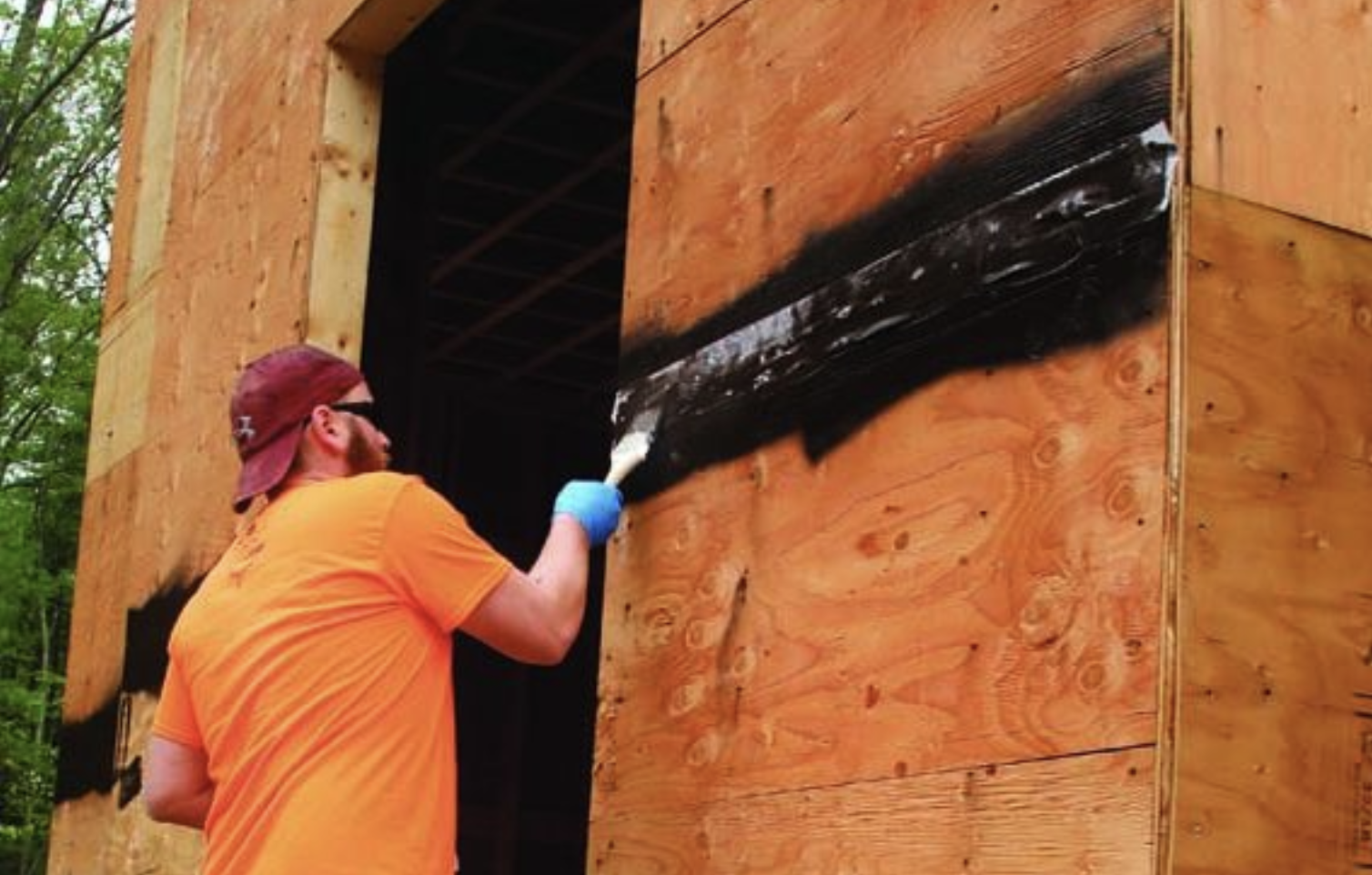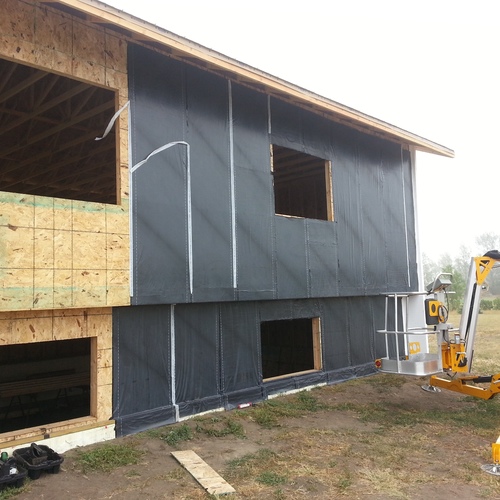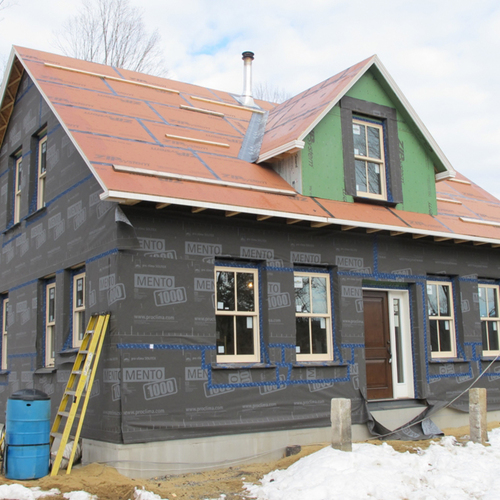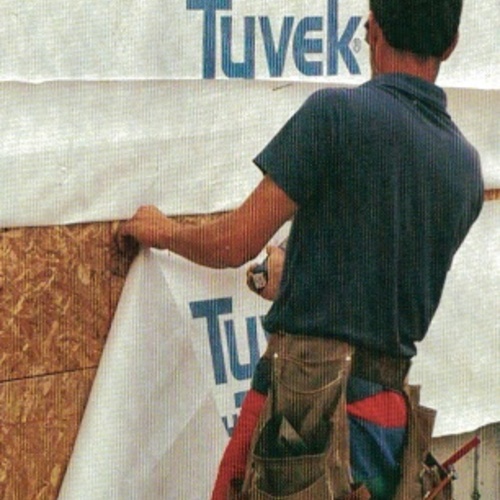
Do we really need it?
Housewrap or building felt is typically applied to building exteriors as a weather-resistive barrier, but one builder wonders whether it's really necessary under a rain screen.Image Credit: Rick Arnold/Fine Homebuilding magazine
Unless a builder has opted for a Zip System wall or is willing to ignore building code requirements, a layer of housewrap or building felt typically covers any exterior sheathing before the siding is applied. This water-resistive barrier, or WRB, helps to protect the sheathing from damage in the event that water is driven past the siding.
But as Richard Baumgarten explains in a Q&A post at GreenBuildingAdvisor, there may be circumstances where the builder would just like to skip it. Under a rainscreen, for example.
“I’ve avoided the use of a WRB on my roof, and would like to go without on my walls,” Baumgarten writes. “Covering an entire house with a WRB seems excessive in a rainscreen system. Capillary water seems to be the only enemy of a rainscreen wall. Impermeable furring strips, or an impermeable strip at the furring strip layer, would appear adequate at preventing capillary moisture from migrating into the wall from wet siding. Asphalt felt or plastic housewraps do not seem ideal for this task.”
Baumgarten presents the question not as a dollars-and-cents issue, but as part of an effort to build a house that minimizes its “toxic imprint.”
Skipping the WRB isn’t worth the risk
“A WRB is required by all building codes,” GBA senior editor Martin Holladay tells Baumgarten. “It is also recommended by all building experts.”
If Baumgarden wants to avoid using plastic housewrap or asphalt-saturated felt, he could choose a liquid-applied WRB, Holladay says. “But a WRB is not optional,” he adds. “You have to have a WRB so you know where you can tie in the flashing. All flashings must be integrated with your WRB.”
Baumgarten says he knows what building codes require and what the experts say, but doesn’t find it convincing. Using a…
Weekly Newsletter
Get building science and energy efficiency advice, plus special offers, in your inbox.

This article is only available to GBA Prime Members
Sign up for a free trial and get instant access to this article as well as GBA’s complete library of premium articles and construction details.
Start Free TrialAlready a member? Log in















2 Comments
A horse of course...
You can lead a horse to water, but you can't make it drink...
walls w/out WRB
With today's highly technical superinsulated wall systems, we simply cannot afford to take chances with moisture, whether it's bulk water or moisture. We have many years of experience "experimenting" with different ways of hoping to keep water out, and we are through with that. We now go the whole 9 yards of WRB, window flashing, flashing pan, vent space, and tape and ice and water shield. We have repaired enough rot on our supposedly waterproof walls that we don't take chances any more.
Log in or become a member to post a comment.
Sign up Log in